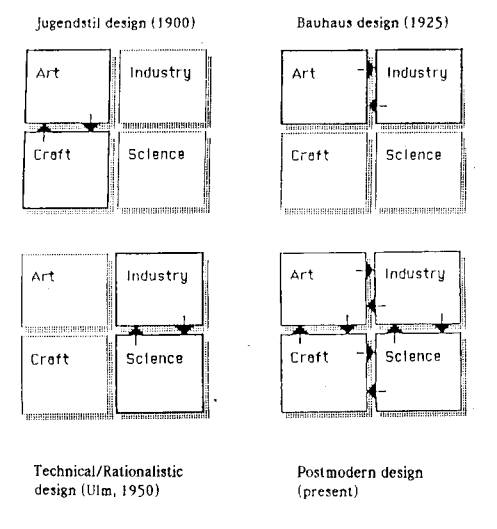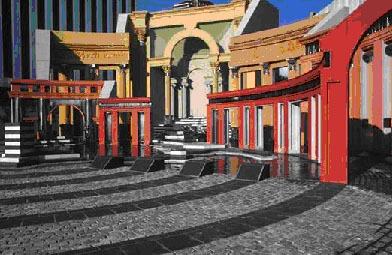Introduction
Semiotic is a theory that explains the application and results of signs and symbols in both artificial and natural language structures. It tries to explain the origin of meaning rather than what the word or phrase means. The theory of semiotics assumes that the thing human beings suppose to be real is rather what individuals accept to be real by decoding signage and creating reality. Semiotics, therefore, may be put as means of interpreting the world in the past, present and future. Aspects used to define semiotics are classified below.
- Signified is what the signifier is referring to; for example, a no-smoking area will be indicated by a struck out smoking cigarette.
- The signifier is the material used to signify; for example, a crying baby’s facial expression in a picture signifies a crying baby.
- The sign is the tool used to communicate.
Ferdinand de Saussure’s theory of signs
Saussure’s theory views linguistic signs as a composition of choices combining sound patterns and concepts. The theory implies that language is a product of two associated terms, and as a result, it is a double entity. This means that language does not only involve identifying a thing by its corresponding name because the concept is interpreted by using a sound image. The meaning is understood by the use of sound pattern that becomes the signifier, while the concept is the signified part of the linguistic sign. Thus, the sound image becomes a psychological mark in mind, rather than just a physical sound. Even in the case of analytical functions where the signified and the signifier are separated, it is impossible to split them in the real sense.
Roland Barthes explained the inseparability of a signifier and signified in reality by the use of the word “rose”. Rose signifies a passion as the concept or signifier, while the passion signified by rose is the sign. Passion and rose do not relate naturally, though the meaning of using these terms is agreed upon by society. Saussure’s supposition is in line with two key principles, linear and arbitrary nature of a signifier and a sign respectively. The sign is arbitrary because the relationship between the signifier and the signified is not natural, but rather merely accepted to be correct. The signifier is linear in nature due to its time limit use. Its use lasts in a single-dimensional span.
Semiotics and signs in designs
The design spreads across a number of activity like architecture, visual communication, industrial and engineering design. Design can be referred to as a problem-solving tool. The design has undergone several stages of development from the jugendstil design (1900), Bauhaus design (1925), technical design (1950), to postmodern design (present). This different generation of designs employed varying approaches in coming up with its structures. A diagram characterizing these periods is shown below.

Each stage has precise semiotic conditions illustrating its concept.
Semiotic aspects to be used should be chosen as a way of facilitating an easier choice of a model to carry out a design. The criteria for choosing the type of semiotic to be used should consider the type of representation, interpretation made, consistency of the representation and the relation between designs and final products. This allows an easier understanding of the semiotic process of design creation.
Semiotics in postmodern designs
In the postmodern design, semiotics is used in nearly all the structures around us. Structure designs included in them carry a particular connection to something. Designers take on the task of coming up with products that resemble signs of themselves. Postmodern cities have been defined by Harvey according to the characteristic features of postmodernity as the coming up of historical eclecticism, multiculturalism and spectacle. Harvey’s suggestions on postmodern designs show that there is a continuous trend from modern designs to those during postmodernism. Thus, postmodernism is an evolving modern product, which proves that there is no difference between them. Eclecticism occurs when design turns out to be an imitation of older forms. Multiculturalism, on the other hand, is when the idea of design is derived from showcasing identities, such as belonging to a certain ethnicity or locality.
A spectacle aspect is when a particular design is chosen with the intention of raising attention to the audience. Thus, elements of semiotics need to be employed to accomplish any of these aspects. Postmodernism design’s symbols should be described in a way that suggests that an intended concept exists or is of use. The positions that one can rationally make out of the use of such symbols will be the reflection of the way from the past to the present social life through which the society’s political identity is known. Family identity is one of the terms of the postmodern cultural artefacts, which are used to realize their stand in regard to their reaction to aesthetic and modern impulse. The family identity of postmodern artefacts is interpreted by the semiotic meaning revealed in its design. The design uses codes with certain characteristics that allow a person to relate it to a particular concept easily.
Charles Moore’s Piazza d’italia building, which image is shown below, has semiotic aspects in it. The piazza includes a combination of functions, symbolic and practical features, which style represents the Italian community. Moore and two local architects came up with the design of the piazza at New Orleans. Due to its design, the building has played an important role in celebrating the culture of Italians and creating an identity for the minority ethnic group. The echoes of Trevi fountain, soil colouring and five rather than three orders represent the ‘Italians’. The land of Italy washed by the Adriatic and Tyrrhenian seas is depicted with the moving water symbols in the design.

The use of semiotics is evident in the design of the piazza. Italian is the signify here, while the use of Trevi fountain echoes, five orders, Latin inscription and moving water of the Adriatic and Tyrrhenian seas are the signifiers.
Designers using semiotic aspect in their design
Philippe Starck
Starck is an interior designer and decorator. Starck makes products that derive their design from fashion and novelty. His interiors are created to surpass not only fashion but also longevity and durability. In the summer of 2000, for example, Starck designed a lemon squeezer named juicy salif. The object cannot be used in practice, but its image shows a picture of a squeezer on top of a glass. It has been exhibited in several museums, such as the New York Museum of Modern Art. The yellow-painted carving sends signals through the half cut lemon squeezed into a glass down it. The standing carve resembles a squeezer. This design work is an imitation of the lemon squeezer. The diagram presentation of it is represented below.

Antonio Citterio
The W hotel in Russia was designed by Citterio, who derived an idea of it from the ancient architectural design of the cities and Faberge egg’s jewel stones. The architectural concept is revealed by the use of light and colour as well as a feeling of comfort created to show its vibrancy and glamour. Jura marble and limestone stones from Germany are used to build the walls of the hotel. The wall style is a reminder of the ancestral city and contains historical elements combined with the latest trends to bring out the modern image.


References
4amagazine, 2012, Contemporary Architecture, Design and Art. Web.
Harvey, D1984, Geography Postmodernism: Conditions of Postmodernism, Oxford Press, New York.
Jameson, F1984, Politics of theory: Ideological positions in the postmodernism, Critique publishers, New Germany.
Jencks, C 2004, Postmodern architecture: Semiotic application, New York, Oxford Press.
Velibeyoglu, K1999, Urban Design in Postmodern Context, Izmir School of Technology, Aegean.